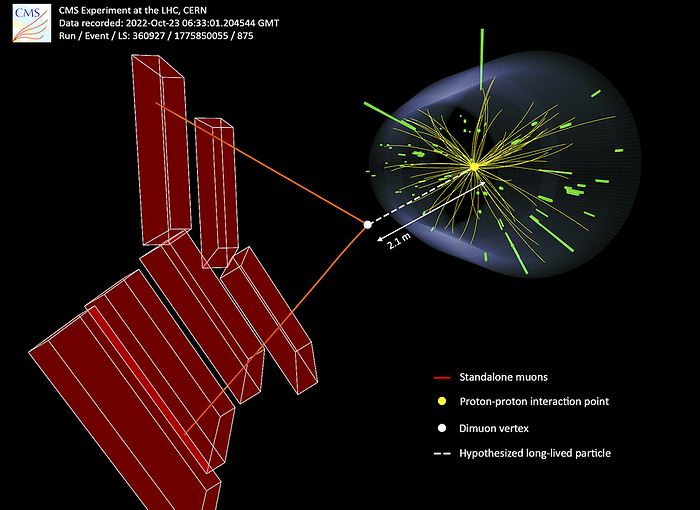
RM
Decay event observed in long-lived particle search, CMS experiment
Collision event was recorded at 13.6 TeV by the CMS (Compact Muon Solenoid) experiment at the Large Hadron Collider in CERN (European Laboratory for Particle Physics). The event featured a candidate for a long-lived particle that decays into a pair of muons. The muon tracks, depicted by red lines, were detected only in the muon system and used to calculate a common vertex, indicated by the white circle. This vertex is hypothesised to be the decay point of the long-lived particle, whose trajectory is shown as a white dashed line. The common vertex is 2.1 meters away from the proton-proton collision point, shown as a yellow circle. Dark photons are long-lived and 'exotic' particles that are not a part of the Standard Model of particle physics., by Photographer/CERN/SCIENCE PHOTO LIBRARY

More
Top Categories
